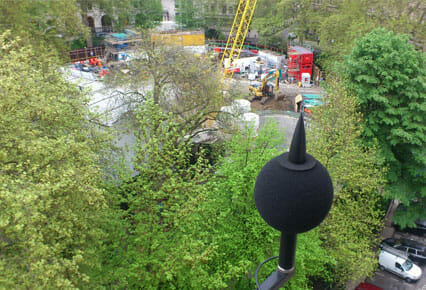The Control of Noise at Work Regulations 2005 (the Noise Regulations) came into force for all industry sectors in Great Britain on 6 April 2006 (except for the music and entertainment sectors where they came into force on 6 April 2008).
Information on Noise Regulations
The aim of the Noise Regulations is to ensure that workers’ hearing is protected from excessive noise at their place of work, which could cause them to lose their hearing and/or to suffer from tinnitus (permanent ringing in the ears).

The Control of Noise at Work Regulations 2005 replaced the Noise at Work Regulations 1989. The level at which employers must provide hearing protection and hearing protection zones is now 85 dB (daily or weekly average exposure), known as the upper exposure action value and the level at which employers must assess the risk to workers’ health and provide them with information and training is now 80 dB, known as the lower exposure action value.
There is also an exposure limit value of 87 dB, taking account of any reduction in exposure provided by hearing protection, above which workers must not be exposed.
Both the 1989 and the 2005 sets of noise regulations are based on European Union Directives requiring similar basic laws throughout the Union on protecting workers from the health risks caused by noise. They do not apply to members of the public exposed to noise from their non-work activities, or when they make an informed choice to go to noisy places or from nuisance noise.
The 2005 Noise Regulations replace the 1989 Noise Regulations and introduce new requirements for action to be taken by employers. For example, the 2005 Regulations require employers to take action to protect workers at levels of noise 5 dB lower than in the 1989 Regulations and now require health surveillance (hearing checks) for workers regularly exposed above 85 dB.
Noise pollution impacts on thousands of people living in the UK every day. The impacts of noise nuisance can be significant leading to disruption, anxiety, irritation and in serious cases it can lead to stress, anger and loss of sleep. Noise is defined as unwanted sound.
Most workplaces expose us to noise. The louder the noise, the more damage it can cause. Noise and vibration can cause long-term damage to our senses.

Hearing and touch can be severely affected by exposure to excess levels of noise and vibration. If people are having difficulty hearing what others say, or have to shout to be understood at a distance of one metre, noise levels are likely to be damaging.
Excessive noise causes permanent damage to hearing. Loud noises can cause hearing loss either progressively, or by exposure over a long period of time. Anyone can be exposed to excessive noise levels. Those working in noisy workplaces, factories, foundries, working with power tools, plant and machinery, and in noisy environments such as road works, airports and construction sites are among those most at risk.
AF Acoustics can undertake a noise at work assessment, in which one of our consultants will visit site during a normal working day. We will then provide the results of the assessment which also taken into account any existing protection systems that are in place (ear plugs, enclosures, barriers, etc.). Our reports provide an explanation of the findings alongside more detailed measurement and assessment data. We will also provide recommendations to ensure the correct level of protection for employees who are exposed to raised noise levels on a regular basis.



